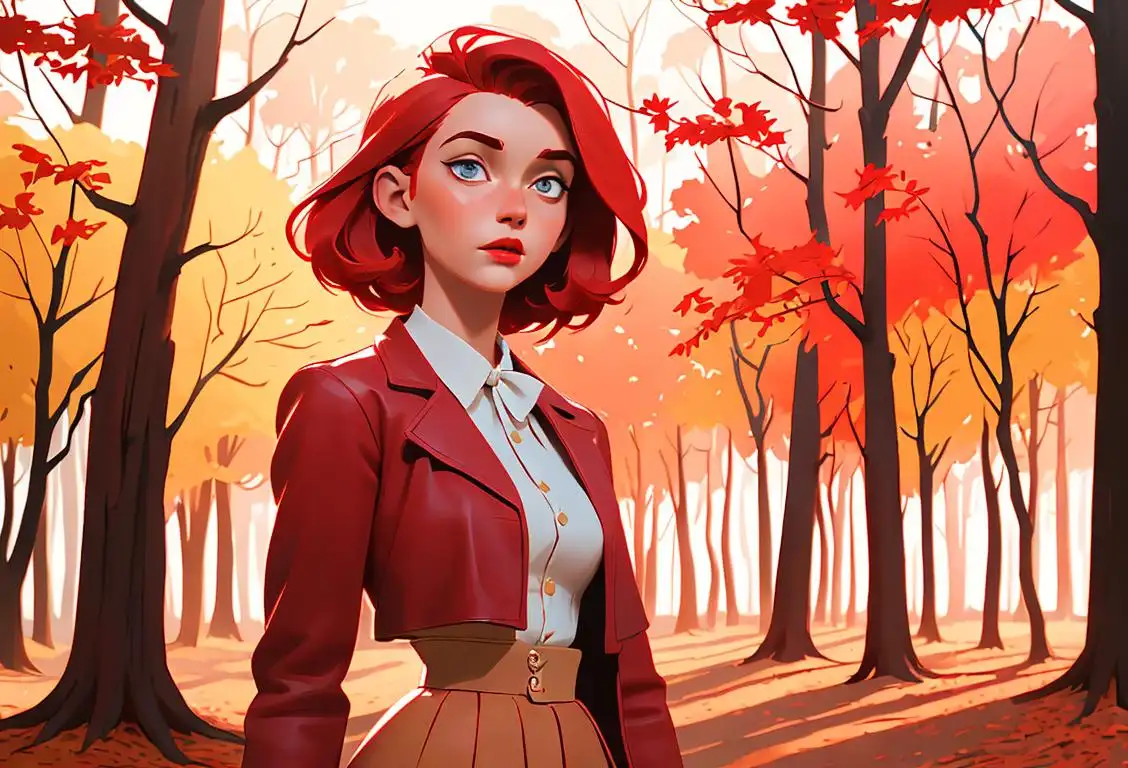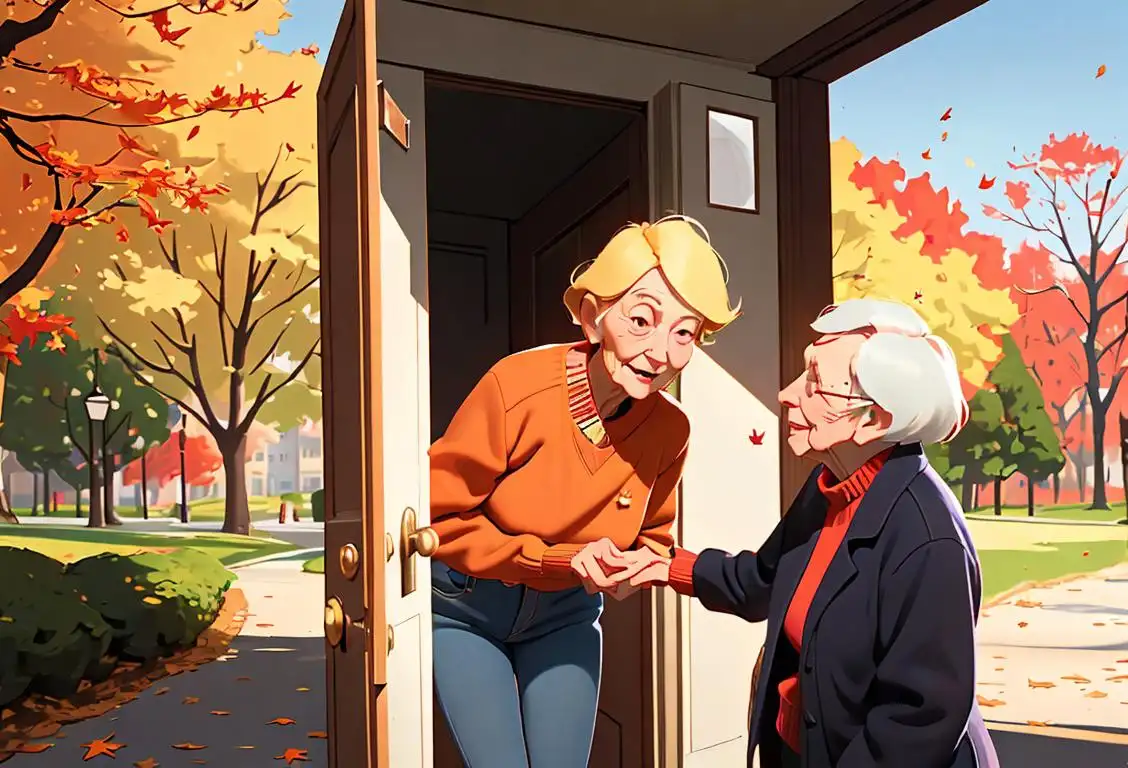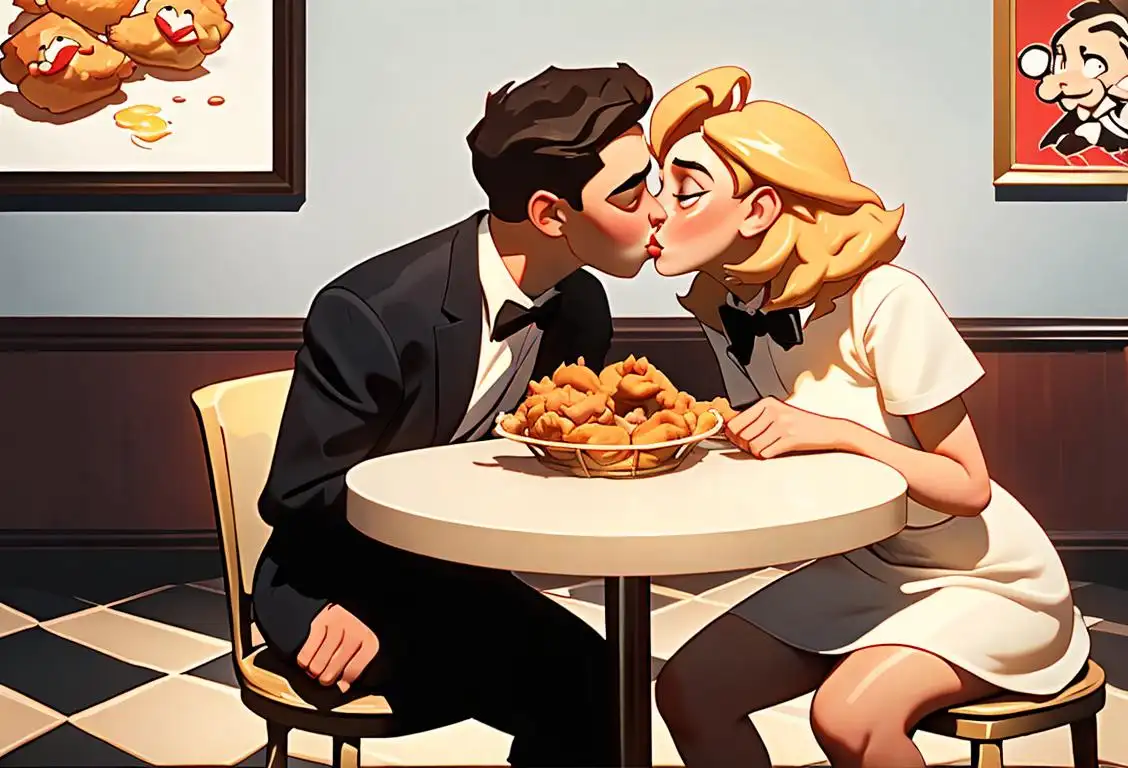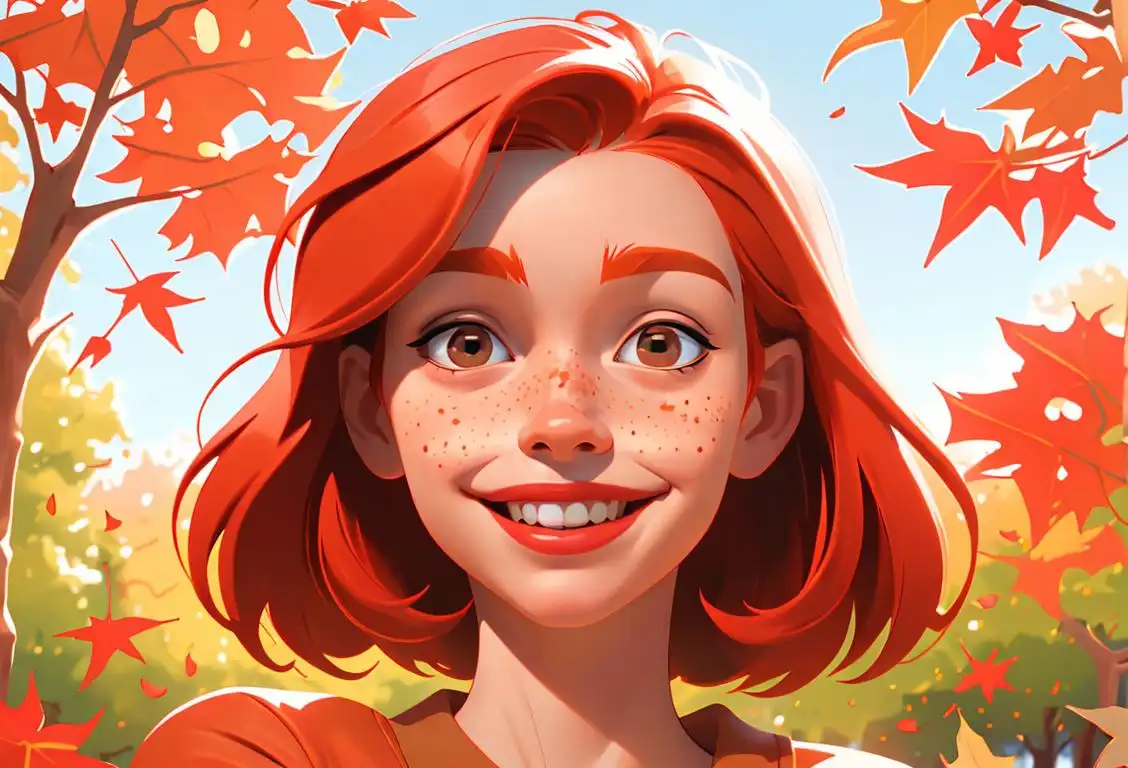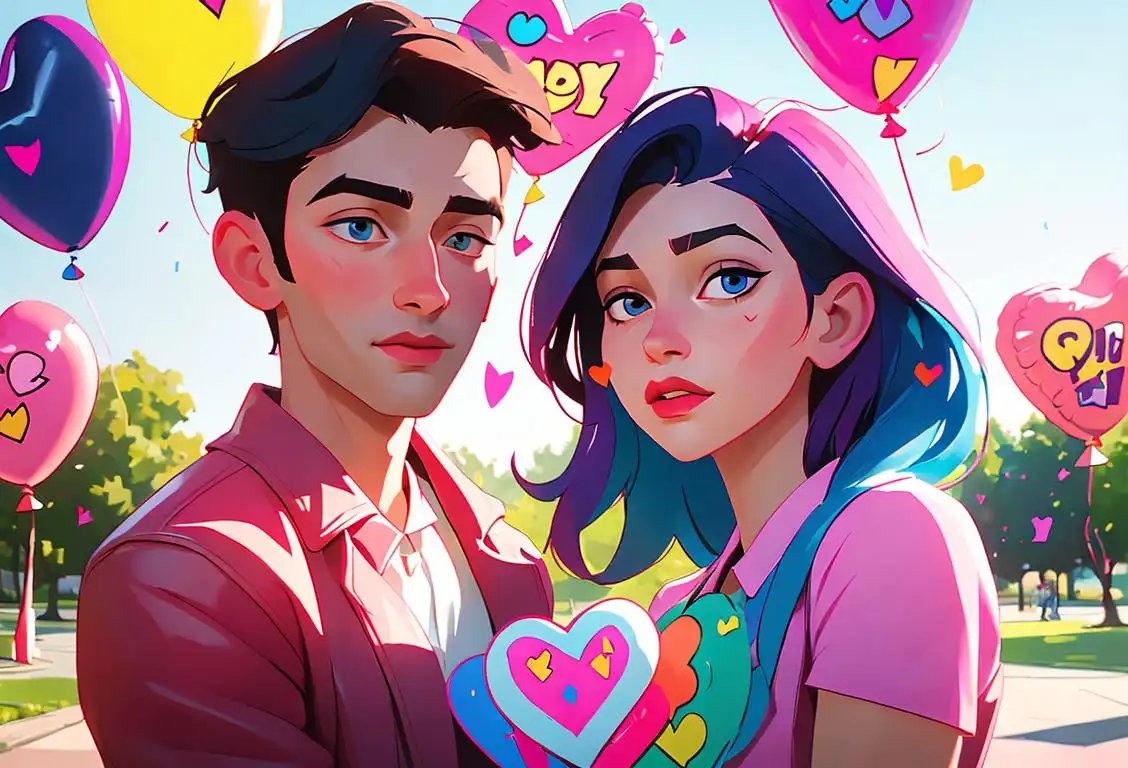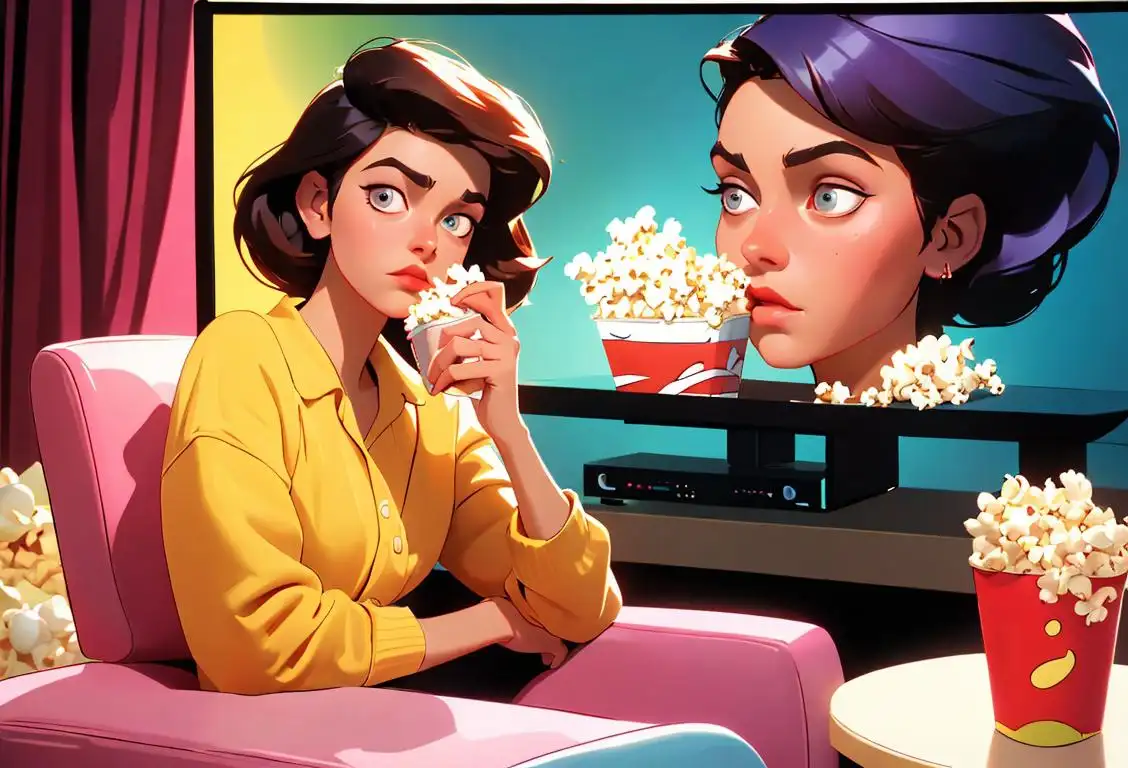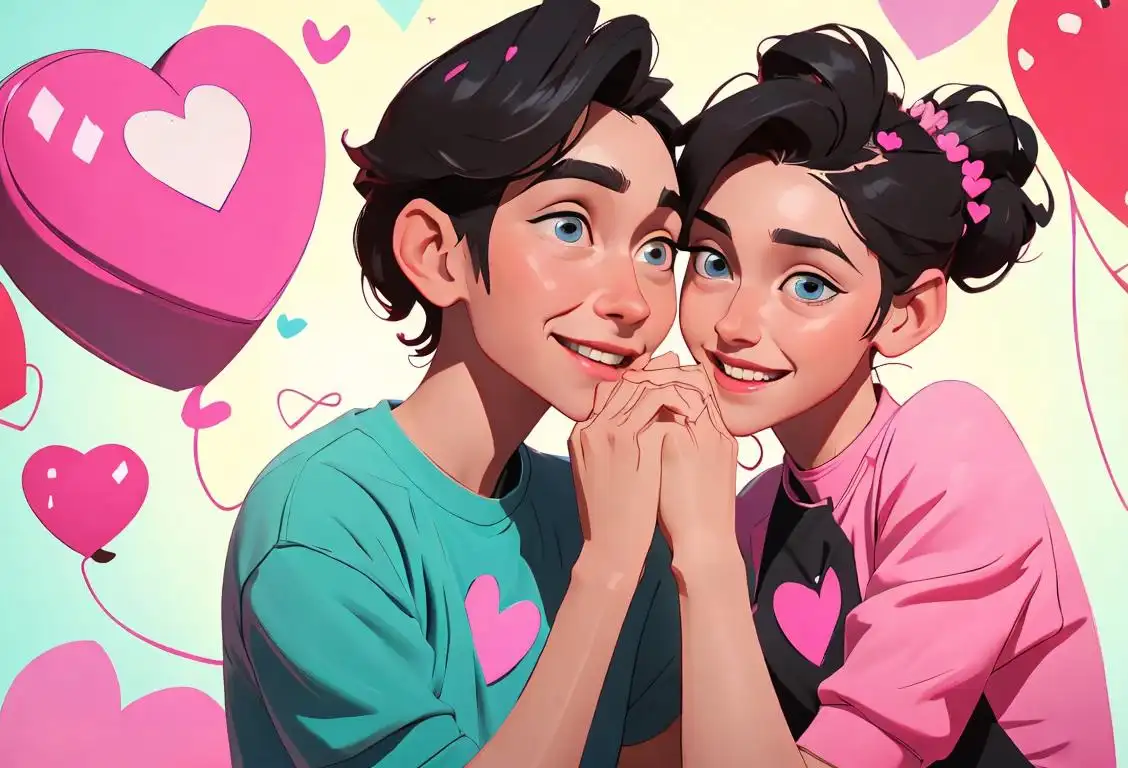National Lovers Day
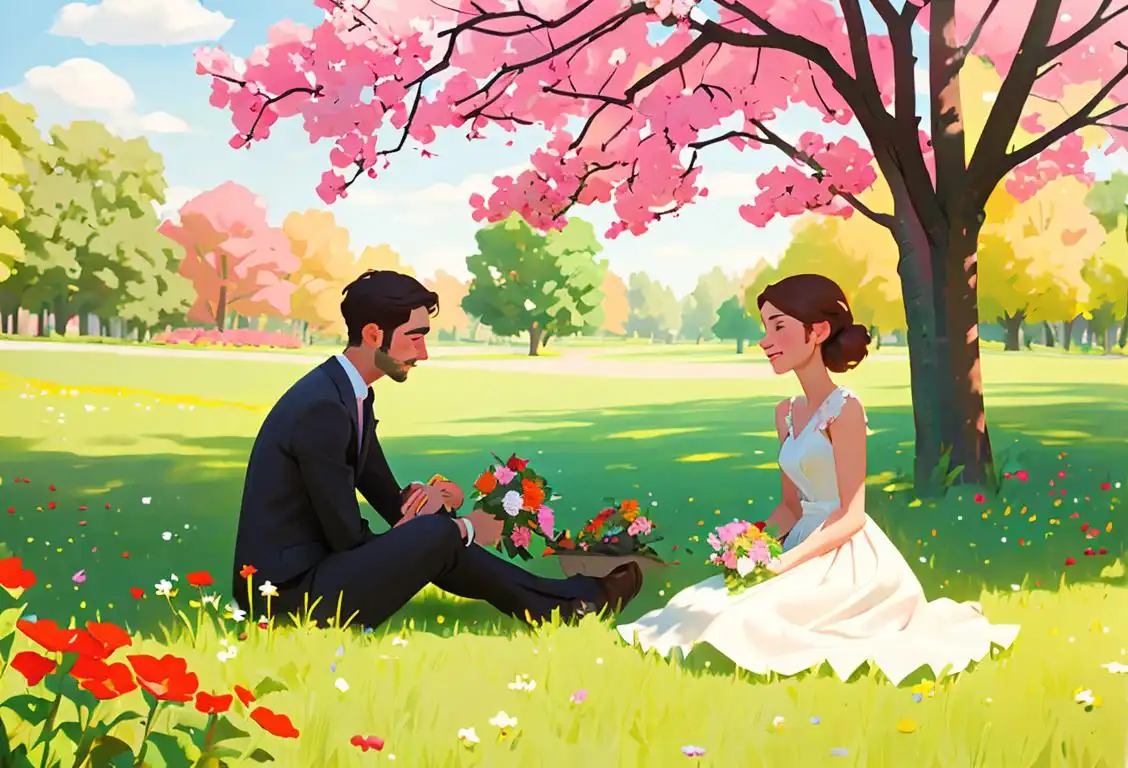
Are you ready for some love? Because today is National Lovers Day, a day to celebrate all the lovely relationships in our lives. Whether it's romantic love, platonic love, or the love you have for your pet goldfish, this day is all about spreading love and appreciation for those who hold a special place in your heart.
When is Lovers Day?
It's national lovers day on the 23rd April.
The Internet History of National Lovers Day
National Lovers Day rose to fame in the digital era as hashtags and trends started flooding social media. People all around the world began sharing heartwarming stories, cute couple photos, and heart-shaped everything. It's like Valentine's Day, but without the pressure to buy a super expensive gift or book a fancy restaurant.
But where did National Lovers Day really come from? Well, it's hard to pinpoint its exact origins. Some say it was started by a group of hopeless romantics who wanted to create a day to celebrate love in all its forms. Others claim that it was invented by a chocolatier trying to sell more heart-shaped chocolates.
Regardless of its origins, National Lovers Day quickly gained popularity and has become a staple in our online calendars. It's a day to express your love for your partner, your family, your friends, and even your favorite pizza topping (pineapple lovers, we're looking at you).
Fun Ways to Celebrate National Lovers Day
Now that you know the internet history of National Lovers Day, it's time to dive into the fun ways you can celebrate this special day:
- Plan a Romantic Picnic: Pack a basket with delicious treats, find a cozy spot in the park, and spend quality time with your loved one. Just make sure to bring bug spray, unless you're into extra close encounters with nature.
- Send Love Letters: In the age of texting and emojis, writing a heartfelt love letter can make a big impact. Get out your fanciest stationery and let your pen do the talking.
- Host a Movie Night: Snuggle up on the couch with a big bowl of popcorn and indulge in your favorite romantic movies. Don't forget the tissues, because you know someone's going to cry when the protagonist finally gets their happily ever after.
Did You Know?
If you're looking to spice things up on National Lovers Day, consider trying some aphrodisiac foods, like oysters or chocolate. These foods have been known to increase desire and set the mood for a romantic evening. But don't worry, if you're not in the mood for romance, they're still delicious to enjoy!
History behind the term 'Lovers'
12th century
Origin of the term 'lovers'
The term 'lovers' traces its origins back to the 12th century. It comes from the Middle English word 'loveris', which derived from the Old English word 'lufu' meaning 'love'. During this time, the term referred to individuals who were engaged in a romantic or sexual relationship.
14th century
The Origin of 'Lovers'
In the 14th century, the term 'lovers' emerged to refer to individuals engaged in a romantic or amorous relationship. Derived from the Old English word 'lofian,' meaning 'to love,' the term symbolized the profound emotional attachment between two people. It became an integral part of the English language, cementing its place as a common descriptor for individuals in love.
14th century
Expansion of the term 'lovers' to signify affectionate relationships
In the 14th century, the meaning of 'lovers' expanded to include individuals in non-romantic, but affectionate relationships. It began to encompass the bond between friends or familial love, such as the love between parents and children. This broadening of its meaning reflected the growing recognition of various forms of love beyond purely romantic contexts.
18th century
Romanticism and 'Lovers'
The 18th century witnessed the rise of Romanticism, a cultural movement that emphasized intense emotions, individualism, and love for nature. During this period, the term 'lovers' took on a deeper meaning, encapsulating the passion and idealized notions of romance prevalent in Romantic literature and art. 'Lovers' became associated with the intense and sometimes tumultuous love affairs depicted in works by writers like William Wordsworth and Samuel Taylor Coleridge.
16th century
Rise of 'lovers' as a term for passionate admirers
During the 16th century, the term 'lovers' gained popularity as a way to describe passionate admirers. It began to be associated with the expression of intense and ardent affection towards someone or something. 'Lovers' started to signify individuals who were deeply interested or enthralled by a particular subject, activity, or cause.
19th century
Lovers in Theatre and Opera
In the 19th century, 'lovers' gained prominence in the world of theatre and opera. Romantic stories featuring star-crossed or forbidden lovers captivated audiences, and 'lovers' became a central theme in countless productions. Iconic tales like Shakespeare's Romeo and Juliet and Giuseppe Verdi's La Traviata showcased the power of love and tragedy, further solidifying the term 'lovers' as an enduring symbol of love and passion.
20th century
Modern Interpretations of 'Lovers'
In the 20th century, the term 'lovers' continued to evolve with societal changes and artistic expressions. The concept of 'lovers' expanded to include same-sex couples as the recognition and acceptance of diverse relationships grew. Films like Brokeback Mountain, released in 2005, challenged traditional notions of love and portrayed the struggles and joys of LGBTQ+ 'lovers.' This period marked a significant shift in the understanding and portrayal of 'lovers' in popular culture.
18th century
Cultural significance of 'lovers' in literature and art
By the 18th century, 'lovers' held significant cultural symbolism, particularly in literature and art. It became a prevalent theme in romantic poetry, plays, and novels, representing the emotional intensity and devotion experienced by characters in various love stories. Artists also depicted 'lovers' in paintings and sculptures, capturing different aspects of love and passion.
20th century
Modern interpretation of 'lovers' and its role in popular culture
In the 20th century, the term 'lovers' continued to evolve and solidify its place in popular culture. It became widely used to describe couples engaged in romantic relationships, emphasizing the emotional and physical connection between two people. 'Lovers' also became a popular designation for fans or enthusiasts of specific musicians, bands, movies, or other art forms.
Present Day
'Lovers' in Contemporary Culture
Today, the term 'lovers' remains an integral part of popular culture, including literature, music, film, and social media. It encompasses a wide range of relationships and represents the diverse forms of love people experience. From epic love stories to everyday expressions of affection, 'lovers' signifies the various ways people connect emotionally and romantically. This enduring term continues to celebrate and explore the complexities of love in our modern world.
Did you know?
Did you know? Aphrodisiac foods like oysters and chocolate can set the mood for a romantic evening!Tagged
romance fun loved onesFirst identified
23rd April 2015Most mentioned on
23rd April 2015Total mentions
366Other days
Love Your Red Hair Day
Do Something Nice Day
Suicide Prevention Month Day
Kissing Fried Chicken Day
Kiss A Ginger Day
Iloveyou Day
Compliment Day
Happiness Day
Tv On The Same Day
Boyf Day
